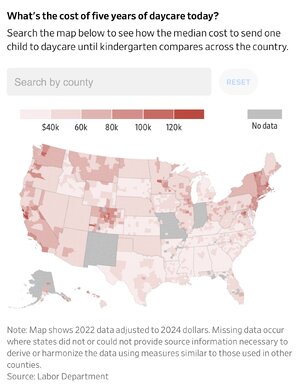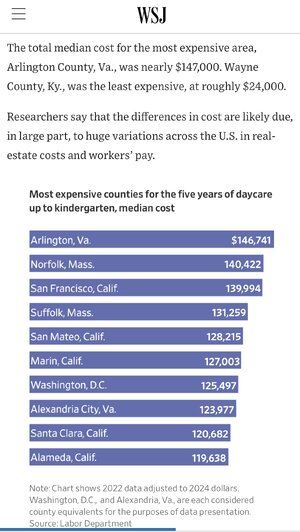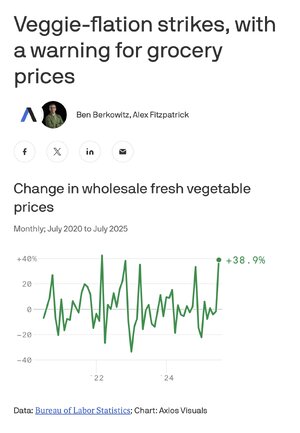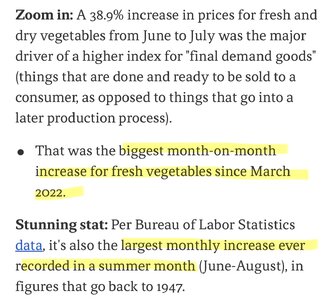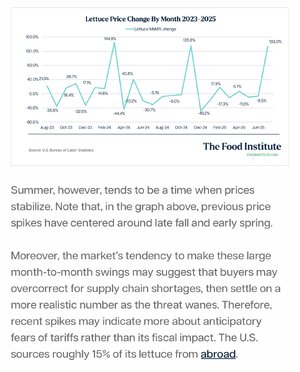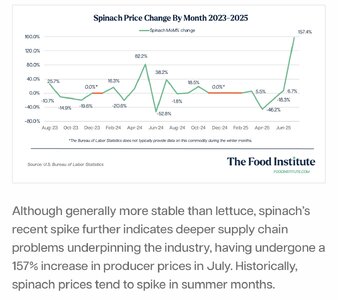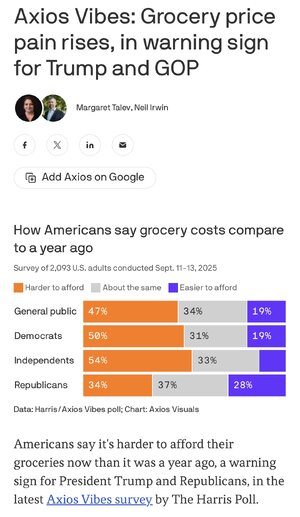“Once it kicks in, once our uhh policies kick in the price of beef will be going down, just like the price of eggs went down and the price of a lot of other grocery items went down, beef will go down. It’ll all go down. Uh energy has gone way down the price of gasoline has gone e really I think it’ll be hitting two dollars very soon and it was four and a half dollars a little while ago. So energy’s gone way down that brings everything else with it but beef has gone as you know for other reasons the price of beef has gone up a little bit it’ll be coming down.”
USDA 8/25/25:
“… During 2025 as a whole, prices for eggs, beef and veal, sugar and sweets, and nonalcoholic beverages are predicted to grow faster than their 20-year historical average rate of growth.
Prices for eight other food-at-home categories are predicted to grow at a slower rate. Prices are predicted to decline for other meats, fats and oils, and fresh vegetables.
From June 2025 to July 2025, retail beef and veal prices increased for the seventh month in a row. Beef and veal prices increased by 2.5 percent from June 2025 to July 2025 and were 11.3 percent higher in July 2025 than in July 2024. The
USDA, ERS Cattle & Beef - Sector at a Glance topics page reports that the U.S. cattle herd has decreased in size since 2019. However, according to analyses and forecasts reported in the
USDA, ERS Livestock, Dairy, and Poultry Outlook, consumer demand has remained strong in the face of tighter supplies.
Beef and veal prices are predicted to increase 9.9 percent in 2025, with a prediction interval of 7.2 to 12.9 percent.
Pork prices rose 1.3 percent from June 2025 to July 2025 and were 1.1 percent higher than in July 2024.
Pork prices are predicted to increase 1.6 percent in 2025, with a prediction interval of -0.5 to 3.9 percent.
Poultry prices decreased by 0.1 percent from June 2025 to July 2025 but were still 3.1 percent higher in July 2025 than in July 2024. Prices for poultry are predicted to increase in 2025 due to strong demand amid higher prices for other animal protein products.
Poultry prices are predicted to increase 2.5 percent in 2025, with a prediction interval of 1.3 to 3.7 percent.
From June 2025 to July 2025, retail egg prices decreased for the fourth month in a row. Egg prices fell 3.4 percent between June and July after having fallen by 10.8 percent from May to June, 7.5 percent from April to May, and by 10.5 percent from March to April. Egg prices in July 2025 were still 16.4 percent higher than in July 2024. Retail egg prices have risen due to an outbreak of Highly Pathogenic Avian Influenza (HPAI) that began in 2022. HPAI contributes to elevated egg prices by reducing egg-layer flocks and egg production. In April 2025, confirmed cases of HPAI tapered, according to the
May 2025 USDA, ERS Livestock, Dairy, and Poultry Outlook. The number of confirmed detections subsequently remained low in May, June, and July compared with earlier in the year.
Egg prices are predicted to increase 24.4 percent in 2025, with a prediction interval of 17.1 to 33.1 percent. This includes price increases already realized from January through March 2025. Even if retail egg prices continue to decrease over the coming months, higher prices realized earlier in the year will continue to factor into the forecast. The Food Price Outlook forecasts the annual average change in prices across all months in 2025 compared to all months in 2024. It does not forecast the 12-month change from the forecast month.
Prices for fresh vegetables rose by 1.7 percent from June 2025 to July 2025 after having increased by 0.7 percent from May to June and by 0.3 percent from April to May but were still 0.8 percent lower than in July 2024. During the first several months of 2025, fresh vegetable prices declined from highs reached in 2024. According to the
December 2024 USDA, ERS Vegetable and Pulses Outlook, unfavorable growing conditions in 2024, including extreme weather in parts of California and Florida, contributed to notable increases in grower prices for key crops like lettuce, onions, carrots, and tomatoes.
Prices for fresh vegetables are predicted to decrease by 0.8 percent in 2025, with a prediction interval of -2.3 to 0.8 percent.…”
ERS research and reporting of the Consumer Price Index (CPI) for food contributes to an understanding of which food categories experience substantial price changes, how consumers spend their incomes on food, and how and why prices change.

www.ers.usda.gov
—> https://www.wsj.com/business/hospit...1?st=KGeALd&reflink=desktopwebshare_permalink

